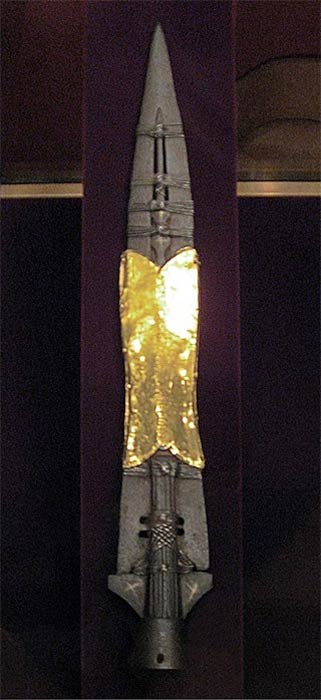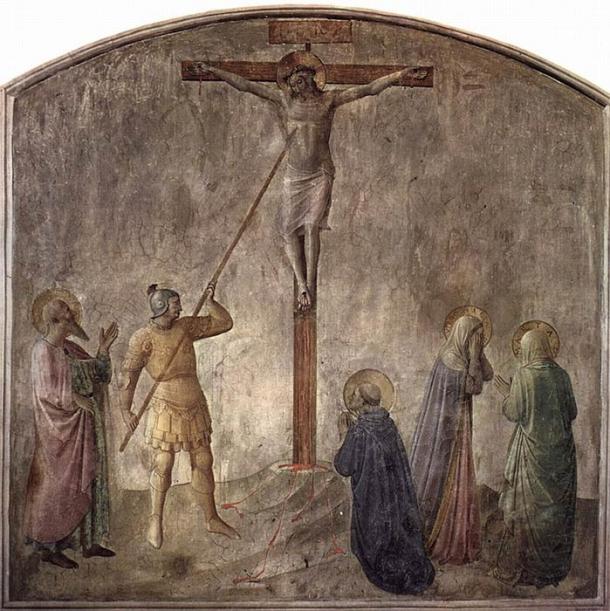Traditional religious literature affirms that the Heilige Lanze (Sacred Lance), also called Spear of Destiny, Longinus Spear, Maurice’s Spear and a myriad of other names, was the weapon with which the Roman centurion Gaius Cassius Longinus pierced the side of Christ, nailed to the cross. These narratives are of little historical value due to the fact that the details are not credible nor confirmed, however, at the Hofburg Museum in Vienna there is actually a lance that has passed on since at least the eighth century until today, from Charlemagne’s hand to Hitler’s hand. The Heilige Lanze is a spearhead without a rod, formed by a blade with an cavity in the middle where a nail is firmly attached. Two small sheaths, silver below and gold above, cover a portion of it. Next to the nail are two small brass crosses.

The Holy Lance, displayed in the Imperial Treasury at the Hofburg Palace in Vienna, Austria ( Gryffindor/ CC BY-SA 3.0 )
The story of the Heilige Lanze begins with the Jesus’ crucifixtion. The apostle John, who may be considered as a reliable Biblical source by some, states: ” But when they came to Jesus, because they saw that he was already dead, they did not break his legs. And one of the soldiers pierced his side with a spear, and immediately blood and water came out of it. And he that saw him testified of it, and his testimony is true, and this man knows to say true things, that ye also may believe. ” ( John 20:33-35). Matthew 27:49,50 is the parallel story which confirms this rendition of the event.

Fresco by Fra Angelico, Dominican monastery at San Marco, Florence, showing the lance piercing the side of Jesus on the cross (c. 1440) ( Public Domain )
The Legend of Longinus
Reverting from Biblical facts to legend: tradition holds that the soldier was named Gaius Cassius Longinus , a common name in Latin society, who commanded a centuria, a detachment of 100 soldiers. It is said that he was almost blind and that the blood of Jesus, splattered by the lance on his eyes, immediately restored his sight. One may wonder how a centurion with impaired sight could have exercised his duties of command and a long series of similar details undermine the credibility of these narratives.
Like this Preview and want to read on? You can! JOIN US THERE ( with easy, instant access ) and see what you’re missing!! All Premium articles are available in full, with immediate access.
For the price of a cup of coffee, you get this and all the other great benefits at Ancient Origins Premium. And – each time you support AO Premium, you support independent thought and writing.
Pierluigi Tombetti is a historian, author and writer who has thoroughly investigated the ideological and social reasons and motivations of National Socialism. Writer, columnist and editor in the historical and archaeological field, he is the author of reportages, articles and essays including SYNCHRONICITY – Flight 9941
Top Image: Crucifixion miniature, Rabula Gospels, with the legend “Loginos”. Meister des Rabula-Evangeliums – The Yorck Project (2002) ( Public Domain )
Related posts:
Views: 0
 RSS Feed
RSS Feed















 August 22nd, 2020
August 22nd, 2020  Awake Goy
Awake Goy  Posted in
Posted in  Tags:
Tags: 
















